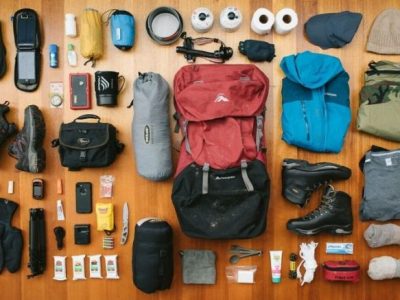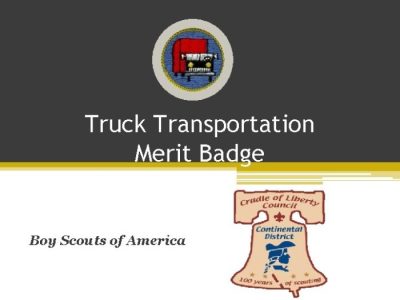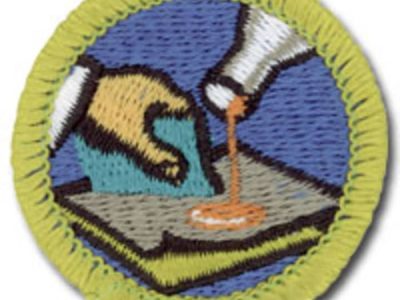Pioneering merit badge knots are an essential skill for outdoor enthusiasts, providing a secure and versatile way to build structures, lash equipment, and solve problems in the wilderness. These knots are used in a wide range of activities, from camping and hiking to backpacking and climbing, and they can be adapted to suit a variety of situations.
In this comprehensive guide, we’ll explore the different types of pioneering merit badge knots, their applications, and the methods for tying them. We’ll also provide tips and tricks for tying knots effectively, as well as resources for learning more about this valuable skill.
Introduction
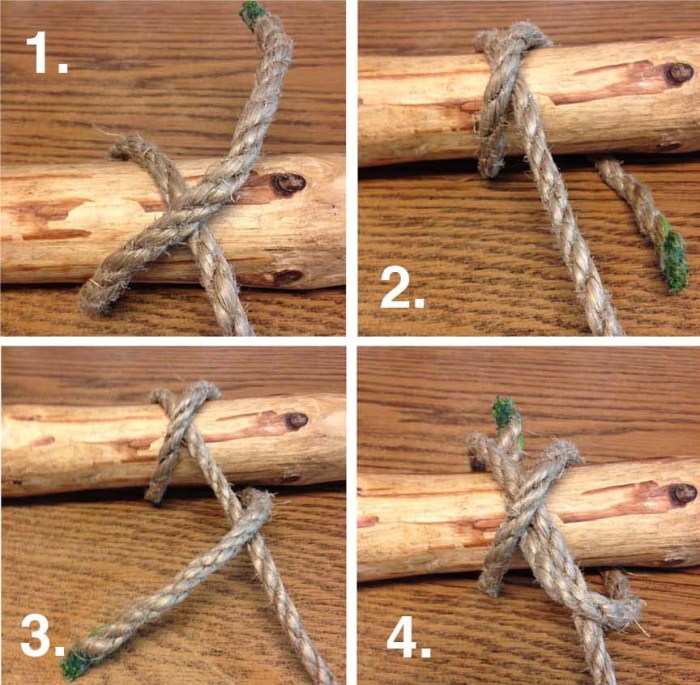
Pioneering merit badge knots are essential skills for Scouts and outdoor enthusiasts alike. These knots are specifically designed for use in constructing pioneering projects, such as bridges, towers, and other structures. Mastering these knots is crucial for ensuring the safety and stability of these structures.
Pioneering merit badge knots are classified into three main categories: lashings, bends, and hitches. Lashings are used to secure two or more poles together, while bends are used to join ropes together. Hitches are used to attach ropes to objects, such as trees or poles.
Lashings
There are three main types of lashings: square lashing, diagonal lashing, and shear lashing. Square lashing is the most basic type of lashing and is used to secure two poles perpendicular to each other. Diagonal lashing is used to secure two poles at an angle to each other, while shear lashing is used to secure two poles that are parallel to each other.
Bends
There are two main types of bends: the square bend and the sheet bend. The square bend is used to join two ropes of equal diameter, while the sheet bend is used to join two ropes of unequal diameter.
Hitches
There are three main types of hitches: the clove hitch, the taut-line hitch, and the bowline knot. The clove hitch is used to attach a rope to a tree or pole, while the taut-line hitch is used to create a temporary loop in a rope.
The bowline knot is used to create a non-slip loop in a rope.
Types of Pioneering Merit Badge Knots
The Pioneering Merit Badge program, offered by the Boy Scouts of America, introduces Scouts to the art of pioneering, including the use of various knots. These knots serve specific purposes in constructing structures, lashing poles together, and securing ropes and cords.
Understanding the different types of knots is crucial for successful pioneering projects.
Square Lashing
Square lashing is a versatile knot used to bind two poles perpendicularly. It creates a strong and secure connection, making it suitable for building frames, towers, and other structures. The knot involves wrapping the rope around both poles in a square pattern, alternating between the poles with each turn.
Diagonal Lashing
Diagonal lashing is similar to square lashing but is used to connect two poles at an angle. This knot provides additional stability and strength, making it ideal for constructing bridges, A-frames, and other structures that require angled connections.
Sheet Bend
The sheet bend is used to attach a rope to a ring, hook, or other object. It creates a secure and adjustable connection, making it useful for attaching ropes to stakes, trees, or other anchor points.
Bowline
The bowline is a self-locking knot that creates a non-slip loop at the end of a rope. It is commonly used for creating loops in ropes for various purposes, such as tying off to a stake or securing equipment.
Clove Hitch, Pioneering merit badge knots
The clove hitch is a versatile knot used to secure a rope around a pole or object. It is easy to tie and release, making it suitable for quickly securing ropes during pioneering projects.
Applications of Pioneering Merit Badge Knots
Pioneering Merit Badge knots find widespread use in various outdoor activities, providing practical solutions for constructing shelters, bridges, and other structures.
These knots are essential for creating secure and stable structures, ensuring the safety and well-being of participants in outdoor adventures.
Securing Structures
- Bowline Knot:Used to create a non-slip loop at the end of a rope, it is commonly employed for securing guy lines and attaching ropes to poles.
- Taut-Line Hitch:This knot is ideal for adjusting the tension of ropes, making it useful for securing tents and tarps.
- Square Lashing:This lashing technique is used to connect two poles perpendicularly, forming a strong and stable joint.
Building Bridges
- Timber Hitch:Used to attach ropes to logs or beams, this knot is essential for constructing bridges and other wooden structures.
- Clove Hitch:This knot is commonly used to secure ropes to poles or other cylindrical objects, providing a firm and adjustable connection.
- Sheer Lashing:This lashing technique is employed to bind poles together parallel to each other, creating a strong and durable bridge deck.
Constructing Shelters
- Sheet Bend:This knot is used to securely attach a rope to a larger rope or object, making it useful for tying down tarps and creating shelter frames.
- Prusik Knot:This knot is used to create a friction hitch, allowing climbers to ascend ropes and adjust the position of shelters or other structures.
- Tripod Lashing:This lashing technique is used to connect three poles together at their tops, forming a stable and sturdy shelter frame.
Methods for Tying Pioneering Merit Badge Knots
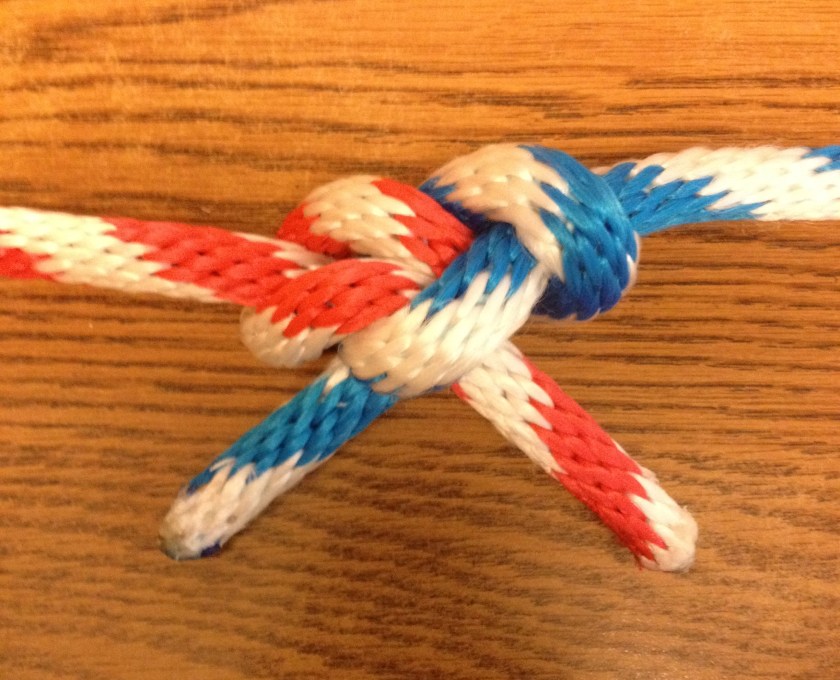
Tying knots is an essential skill for any outdoor enthusiast. It can be used to secure tents, build shelters, and create tools. The Pioneering Merit Badge Knots are a set of knots that are specifically designed for these tasks.
There are many different ways to tie knots. Some knots are simple and easy to learn, while others are more complex and require more practice. The best way to learn how to tie knots is to practice regularly. There are many resources available online and in libraries that can help you learn how to tie knots.
Square Lashing
The square lashing is a simple and versatile knot that can be used to secure two poles together. It is often used to build frames for tents and shelters.
- Cross the two poles at right angles.
- Wrap the cord around the poles, making sure to cross the cord over itself at each intersection.
- Continue wrapping the cord around the poles until the knot is secure.
Diagonal Lashing
The diagonal lashing is a variation of the square lashing that is used to secure two poles together at an angle. It is often used to build frames for A-frame tents.
- Cross the two poles at an angle.
- Wrap the cord around the poles, making sure to cross the cord over itself at each intersection.
- Continue wrapping the cord around the poles until the knot is secure.
Tripod Lashing
The tripod lashing is a knot that is used to secure three poles together at the top. It is often used to build tripods for cooking or supporting tents.
- Lay the three poles on the ground in a tripod shape.
- Wrap the cord around the poles, making sure to cross the cord over itself at each intersection.
- Continue wrapping the cord around the poles until the knot is secure.
Shear Lashing
The shear lashing is a knot that is used to secure two poles together at a right angle. It is often used to build frames for tables and benches.
- Cross the two poles at a right angle.
- Wrap the cord around the poles, making sure to cross the cord over itself at each intersection.
- Continue wrapping the cord around the poles until the knot is secure.
Tips and Tricks for Tying Pioneering Merit Badge Knots
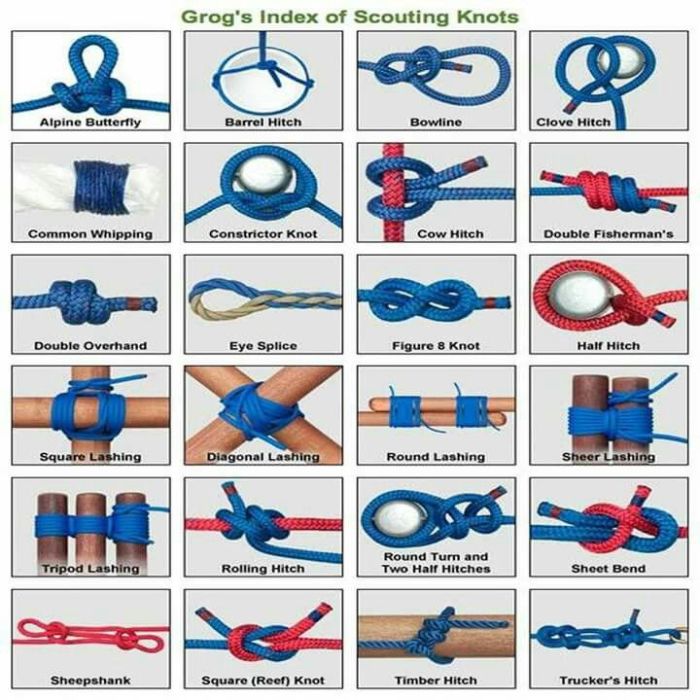
Mastering the art of tying pioneering merit badge knots requires practice, precision, and a few clever techniques. Here are some invaluable tips and tricks to help you excel in this skill:
Before attempting to tie a knot, it’s crucial to understand its purpose and the type of rope or cord you’re working with. Different knots are designed for specific applications, and the thickness and material of the rope can affect the knot’s strength and security.
Common Mistakes to Avoid
- Overtightening:Avoid pulling the rope too tightly, as this can weaken the knot and make it difficult to untie later.
- Undertightening:Ensure the knot is snug and secure, but not so tight that it damages the rope or causes it to slip.
- Improper Crossing:Pay attention to the crossing points of the rope. Incorrect crossings can result in a weakened or unstable knot.
- Incorrect Sequence:Follow the proper sequence of steps for each knot. Skipping or reversing steps can lead to an incorrect or insecure knot.
- Loose Ends:Always trim any excess rope or cord after tying the knot to prevent snagging or tripping hazards.
Resources for Learning about Pioneering Merit Badge Knots
Numerous resources are available to assist individuals in acquiring knowledge about Pioneering Merit Badge knots. These resources range from comprehensive books and websites to organizations dedicated to promoting pioneering skills.
For those seeking a comprehensive guide, the following books are highly recommended:
- The Ashley Book of Knotsby Clifford W. Ashley
- Knots for Climbersby Craig Luebben
- Pioneering: The Textbook of Knots, Hitches, and Slingsby Karl R. Smesrud
Online resources offer a wealth of information and tutorials on pioneering knots. Notable websites include:
- Animated Knots: https://www.animatedknots.com/
- NetKnots: https://www.netknots.com/
- International Guild of Knot Tyers: https://www.igkt.net/
Organizations such as the Boy Scouts of America and the Girl Scouts of the USA offer programs and resources specifically designed to teach pioneering knots and other outdoor skills.
By utilizing these resources, individuals can gain a comprehensive understanding of pioneering knots, their applications, and the techniques for tying them effectively.
Historical Background of Pioneering Merit Badge Knots
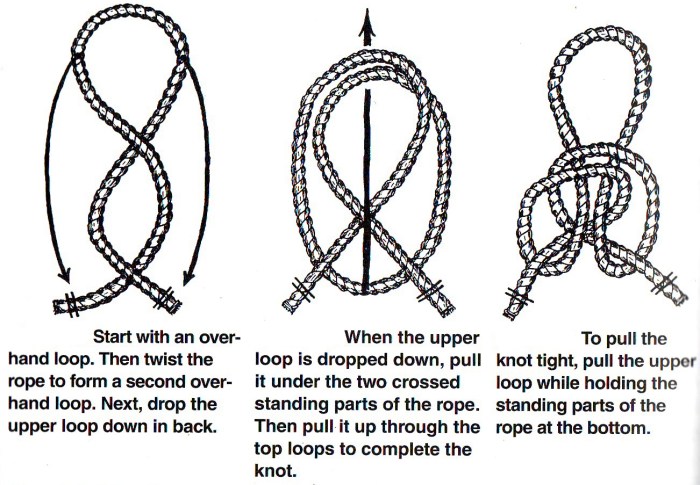
The origins of pioneering merit badge knots can be traced back to ancient times, with evidence of their use in various cultures across the globe. These knots served practical purposes, such as securing shelter, constructing tools, and facilitating transportation.Over time, these knots evolved and were refined by pioneers, explorers, and military personnel.
In the 19th and 20th centuries, organizations like the Boy Scouts of America and the Girl Scouts of the USA began incorporating pioneering merit badge knots into their programs, recognizing their importance in outdoor activities and survival skills. Today, these knots continue to be used by outdoor enthusiasts, construction workers, and anyone who requires secure and versatile knots for various tasks.
Knots in Ancient Civilizations
Archaeological evidence suggests that knots have been used for thousands of years, with examples found in ancient Egyptian tombs, Chinese silk paintings, and Native American artifacts. These knots were used for a wide range of purposes, including constructing shelters, making clothing, and securing weapons.
Knots in the Age of Exploration
During the Age of Exploration, sailors and explorers relied heavily on knots for securing sails, rigging ships, and navigating treacherous waters. These knots were often complex and required specialized knowledge to tie correctly. Many of these knots are still used today in boating and sailing.
Knots in Modern Times
In modern times, pioneering merit badge knots have found applications in various fields, including construction, arboriculture, and emergency response. These knots are valued for their strength, reliability, and versatility, making them essential tools for professionals and outdoor enthusiasts alike.
Cultural Significance of Pioneering Merit Badge Knots
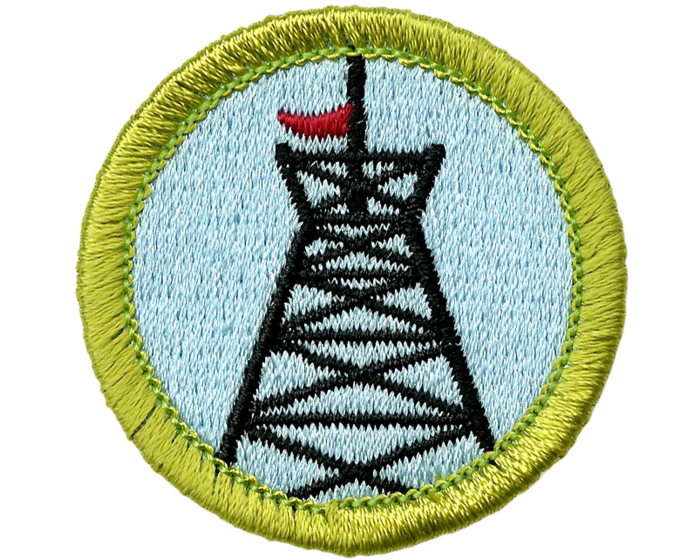
Pioneering Merit Badge knots hold profound cultural significance, transcending their practical applications and delving into the realm of symbolism and tradition. These knots have been interwoven into the fabric of various societies, serving as potent representations of unity, strength, and ingenuity.
In many cultures, knots have been employed as protective talismans, believed to ward off evil spirits and safeguard individuals from harm. The intricate patterns and secure holds of these knots symbolize the interconnectedness of life and the enduring bonds that unite communities.
Use in Traditional Ceremonies
Pioneering Merit Badge knots play a pivotal role in traditional ceremonies and rituals across the globe. In Native American cultures, for instance, specific knots are used to bind sacred objects and represent the union of different clans or tribes. Similarly, in Japanese tea ceremonies, the intricate “chasen” knot adorns the bamboo whisk, symbolizing the harmonious blending of tea and water.
Innovations and Advancements in Pioneering Merit Badge Knots
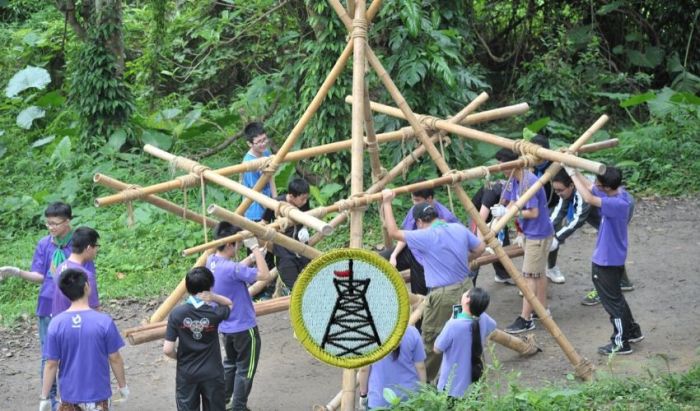
Recent developments in knot tying have emerged, driven by advancements in materials and techniques.New synthetic fibers, such as Dyneema and Vectran, offer exceptional strength-to-weight ratios, making them ideal for high-load applications. These materials have revolutionized the design and performance of pioneering knots.
New Techniques
Modern knot tying incorporates innovative techniques, such as:
-
-*Capstan Knot
A versatile knot used to secure a rope around an object, providing a secure hold even under tension.
-*Prusik Knot
A friction hitch used for ascending or descending ropes, offering a simple and reliable method for rope management.
-*Taut-Line Hitch
A knot used to attach a rope to a stake or post, allowing for easy adjustment and tensioning.
Conclusion
Pioneering merit badge knots are indispensable tools for outdoor enthusiasts and professionals alike. Their versatility, strength, and adaptability make them essential for constructing sturdy and reliable structures in various settings. Understanding the different types of knots, their applications, and the methods for tying them empowers individuals with the skills to create functional and safe structures.The
historical and cultural significance of pioneering merit badge knots underscores their enduring value. They have been used for centuries to build bridges, shelters, and other structures, contributing to human progress and exploration. As technology advances, pioneering merit badge knots continue to evolve and find new applications, demonstrating their timeless relevance.By
embracing the principles and practices of pioneering merit badge knots, individuals not only enhance their outdoor skills but also develop a deeper appreciation for the ingenuity and craftsmanship of those who came before them. These knots represent a living tradition that connects the past, present, and future, empowering us to build and create in harmony with our surroundings.
Closing Summary
Pioneering merit badge knots are an invaluable asset for anyone who spends time outdoors. By mastering these knots, you’ll be able to confidently tackle any challenge that comes your way, whether it’s building a shelter, repairing gear, or rescuing a fellow adventurer.
FAQ Section
What are pioneering merit badge knots?
Pioneering merit badge knots are a set of knots that are used in outdoor activities, such as camping, hiking, and backpacking. These knots are designed to be strong, secure, and easy to tie, even in difficult conditions.
What are the different types of pioneering merit badge knots?
There are many different types of pioneering merit badge knots, each with its own unique purpose. Some of the most common knots include the square knot, the bowline knot, the clove hitch, and the taut-line hitch.
How do I tie a pioneering merit badge knot?
There are many different ways to tie a pioneering merit badge knot. The best way to learn is to practice tying the knots yourself. You can find instructions for tying knots online or in books.

